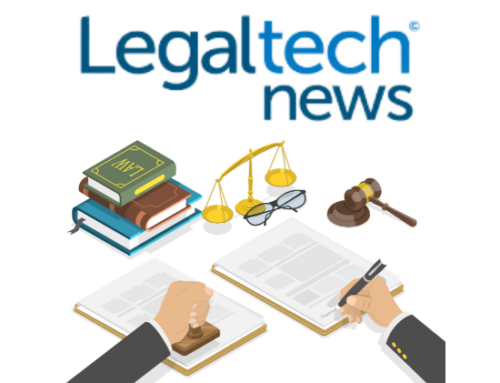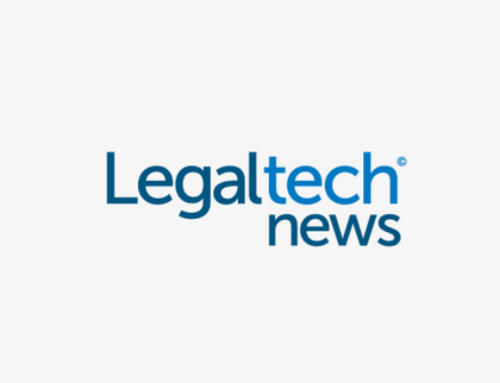This article appeared in ALM Legaltech News on October 7, 2024
Law firm operations are different now. Obviously, the biggest impact of COVID has been the inception and continuation of the hybrid work environment. This has had a notable ripple effect in two ways—the first has been a kick in the pants for law firms to migrate to a digital working environment which has propagated a notable increase in onsite scan volumes.
The other has been an expected decrease in onsite volumes of B&W and color copies and prints. For firms that have been relying on this volume to maintain this recovery stream, this decrease has been disconcerting and calls into question the viability of recovery. For firms that have moved to scan recovery, the resulting increase in scan volume has lessened the impact of the decrease in copy/print volumes.
In comparing Mattern's cost recovery data in 2023 and 2021, we can see many of those trends touched on in that survey solidified as firms have adjusted their cost recovery strategies to the hybrid environment. Here are some of those highlights.
What Are Firms Recovering, and How and Where Are They Doing It?
Since 2021, the percentage of firms recovering traditional areas of cost recovery are trending upwards with an 11% increase in both B&W and color copies and a more than 20% increase in B&W and color prints.
Legal research and data storage are both continuing to trend downwards with a 24% decrease in recovery for legal research and an 18% decrease in recovery for data storage/hosting. Litigation support/e-discovery services also increased by 7% with some firms recovering costs by billing as an hourly professional fee.
Legal research has been a consistent struggle for firms to recover. Through 2016, net realization had dropped consistently, bottoming out at 25% in 2016 before a resurgence in 2018 to 37%. Once again, legal research net realization is on the decline at 31% based on this survey.
Surprisingly, though net realization declined, both the billable amount billed increased 5% and the percentage paid by clients increased 2% from 85% in 2018 to 87%. The decline in net realization can solely be attributed to a decline in billable ratio, which decreased a whopping 17% from 69% in 2018 to 52% in 2023.
These results beg the question as to whether the decline from 2023 is based on the perception that clients won't pay for legal research vs. what the data is showing that clients are paying legal research charges at a very high rate.
Ninety-two percent of respondents are utilizing a traditional cost recovery model to recover soft costs while 8% are recovering only hard costs where costs are incurred as a 3rd party invoice and passed through to the client.
Given the hybrid workplace, a limited number of firms have adjusted to recover costs from the home. Since 2021, we've seen an 11% increase in firms that are recovering costs created in both home and office environments.
Firms are facing more pushback from clients on soft cost recovery areas where they've historically encountered it with the biggest pushback in B&W copy/print and legal research with more than half of respondents noting they are challenged on these costs. Further, many clients are refusing to pay soft costs for many areas at an increasing rate from our 2018 Cost Recovery Survey. However, one area that continues to see a decrease in pushback is in word processing despite an uptick in respondents who are recovering in that area.
One interesting area to note is litigation support. Client pushback had been steadily increasing from 2012 through 2018, but no respondents reported client pushback on litigation support in this year's results even though more respondents indicated they are recovering these costs.
Firms' strategies for clients who refuse to pay soft cost disbursements are consistent with prior survey results with 58% allocating these costs to a billable client-matter number and written off, 34% allocating costs to an internal overhead or a non-billable client-matter number, and 8% allocating costs to an attorney/practice group area.
Net realization of soft costs has continued to decrease from previous survey results.
Respondents to this survey reported a billable ratio for copies, prints, and scans at 43% representing a 14% decrease from 2018. Coupled with a lower percentage billed (63% in 2023 compared to 77% in 2018) and a lower percentage of these costs paid by clients (71% in 2023 compared to 85% in 2018), the net realization has dropped by more than half.
Understanding the Trends
These results show a decline in every measure of recovery for firms since 2018 and a continuation in the trend we saw prior to the 2018 survey with clients pushing back more on the recovery of soft costs. It's not surprising that as inflation has led to rising costs clients are refusing to pay for ancillary services.
While soft costs remain a source of contention between firms and clients, firms have been successful in recovering hard costs with respondents reporting a net realization of 94% of hard cost disbursements after internal/external write-offs, which represents a 4% increase from our 2018 survey.
Given the low realization on soft costs, firms will need to develop strategies to reduce the soft costs involved, find creative ways of billing, such as adding to each billable hour, adding a flat percentage of total charges, integrate these costs into their fees, or abandon recovery of soft costs.
As seen in the data, 57% of respondents noted they've considered foregoing these charges entirely, 43% considered adjusting fees to include cost recovery or adding a percentage to its fees to recover costs. However very few firms have migrated in that direction.
Uptick in Recovery Dollars: There has been an increase in the recovery of dollars as a percentage of a firms' total revenue. From the previous figure of less than 1% in 2021, the 2023 survey shows that 77% of firms are now reporting recovery dollars greater than 1% of total revenue.
Changes in Cost Recovery Areas: Traditional areas of cost recovery like B&W and color copies and prints have seen an increase in recovery despite decreasing volumes. Conversely, there has been a decrease in recovery us such areas as legal research and data storage/hosting.
Challenges in Soft Cost Recovery: Firms are facing significant pushback from clients in soft cost recovery areas like B&W copy/print and legal research.
Shift in Client Attitudes: Interestingly, there's no reported client pushback in litigation support cost recovery, suggesting a possible area of client tolerance or acceptance where firms can focus their recovery efforts.
Going Forward: As so eloquently stated by Rebecca in season 1 of "Ted Lasso": "Turn your disadvantage into an advantage."
Need for New Strategies: With the low realization of soft costs, the impact of the hybrid environment and the pressure to decrease costs, the survey (again) underscores the need for new strategies to recover costs. These could include reducing the use of soft costs, integrating some items into fees, developing a hard-cost based billing model, or even abandoning the recovery of soft costs altogether.
These moves, coupled with the need for firms to restructure its administrative support model due to the hybrid environment, the advent of AI and the possibility of recovering costs associated with that technology, provides a blank slate for firms to develop a new cost recovery strategy that actually reflects how they currently work and will work in the future.
We are not advocating what Ted Lasso stated in response to Rebecca's comment, about "causing confusion or creating chaos," however it is an opportunity to develop a model that truly reflects how firms work and will work in the future.



